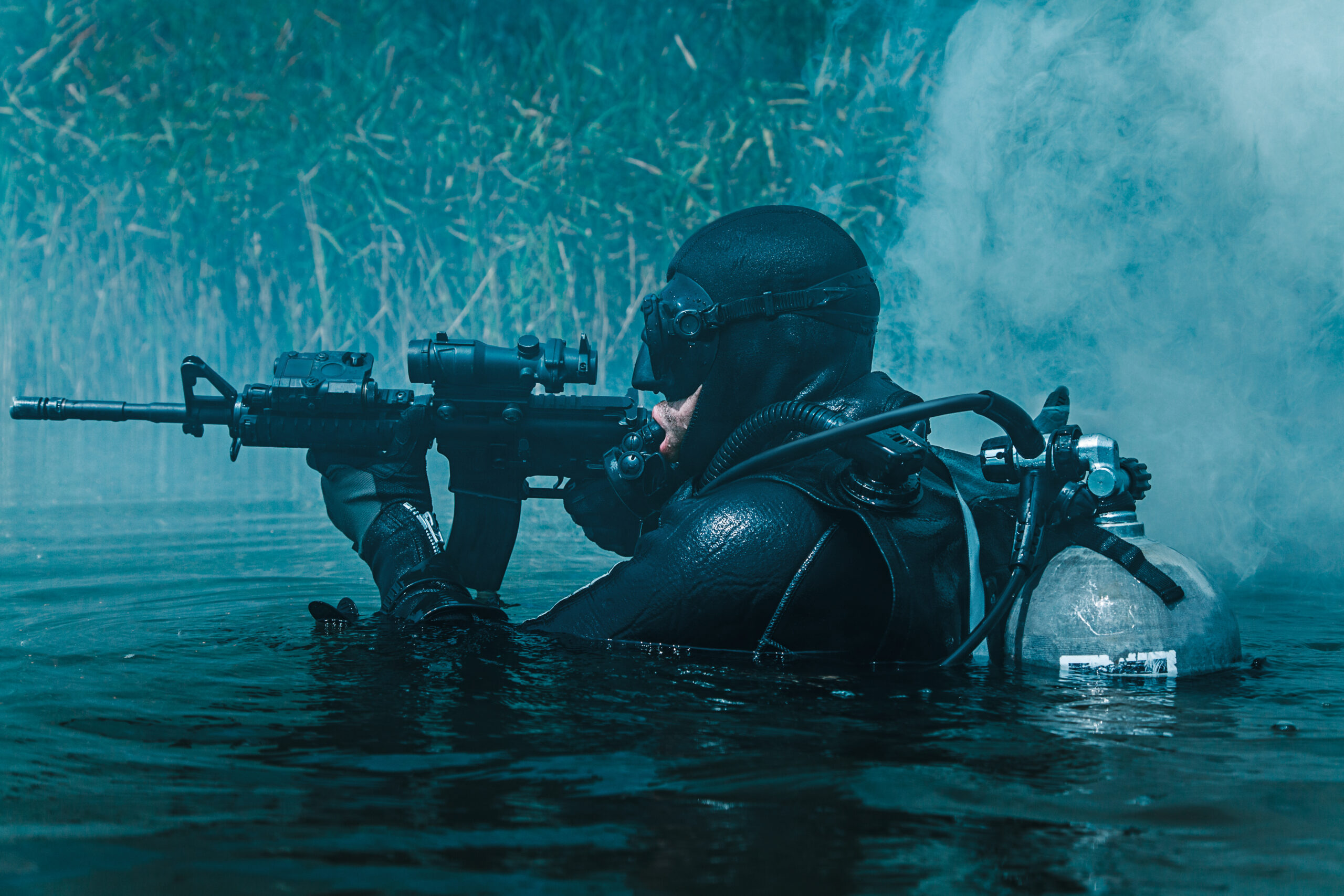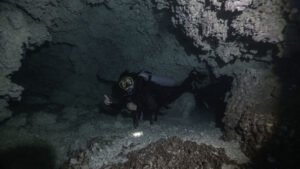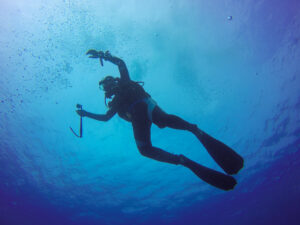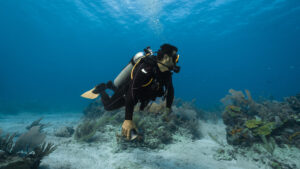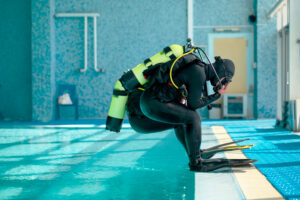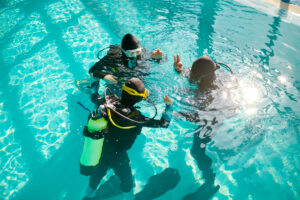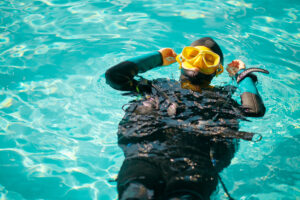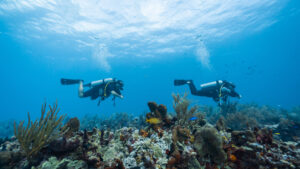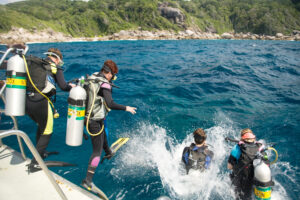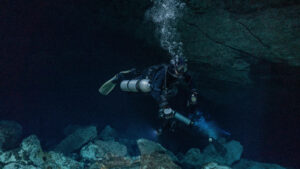What is a Frogman?
Frogman is a term used to describe a military scuba diver who engages in covert operations, underwater reconnaissance, and sabotage missions. These highly trained divers utilize specialized equipment and techniques to perform tasks that are essential to naval and military objectives. The frogman’s role in military operations dates back to World War II and has since evolved to include various specialized subgroups within different military branches.
History
The origin of the term “frogman” can be traced back to the Italian Navy’s elite combat swimmer unit known as the Decima Flottiglia MAS, active during World War II. These divers were nicknamed “uomini rana,” which translates to “frogmen” in English, due to their amphibious nature and ability to operate both on land and underwater. The British Royal Navy and the US Navy later adopted the term for their combat divers as well.
In World War II, frogmen were employed in various underwater missions, including reconnaissance, mine clearance, and sabotage of enemy ships. One of the most notable frogman operations was the Italian Decima Flottiglia MAS’s attack on the British naval base in Alexandria, Egypt, in 1941. This daring mission resulted in the sinking of two British battleships and significant damage to a third.
The success of frogman missions during World War II led to the establishment of specialized military diving units in several countries, including the United States, the United Kingdom, and Russia. The US Navy’s Underwater Demolition Teams (UDTs), established in 1943, later evolved into the Navy SEALs, while the British Royal Navy’s Special Boat Service (SBS) was formed in 1940, and Russia’s Spetsnaz combat diver units were created in the 1950s.
Training and Selection
Military frogmen are selected from within their respective military branches through a rigorous selection process that tests physical fitness, mental resilience, and technical aptitude. Candidates must demonstrate exceptional swimming and diving skills, as well as the ability to operate effectively in high-stress, hostile environments.
Upon successful selection, frogmen undergo extensive training in various disciplines, including underwater navigation, demolitions, reconnaissance, and combat tactics. Training programs often include exercises that simulate real-life scenarios, such as night-time infiltrations, underwater combat, and evasion techniques.
Frogmen may also receive specialized training in areas such as combat diving medicine, parachute operations, small boat handling, and language skills, depending on their assigned mission requirements.
Equipment and Techniques in Frogman Operations
Frogmen, a term often used to refer to combat divers or specialized military and naval divers, have long been part of naval warfare and covert operations. Their role in underwater operations, reconnaissance, and sabotage activities necessitates the use of highly specialized equipment and techniques. While the uninitiated might envision standard scuba gear, frogmen operations require more sophisticated, covert, and often, militarized gear. Here’s an in-depth look into some of the essential equipment and methodologies employed by frogmen:
Diving Suits
A frogman’s diving suit is not just a protective layer; it’s a meticulously engineered garment designed to optimize performance in covert underwater operations.
- Thermal Protection: Underwater temperatures can vary drastically. Prolonged exposure can lead to hypothermia, reducing a diver’s operational efficiency. Frogmen’s diving suits provide insulation against the cold, ensuring they remain agile throughout their mission.
- Minimizing Noise: Stealth is crucial. The suits are designed to minimize noise during movement, reducing the chances of detection by enemy sonar or other underwater surveillance.
- Detection Reduction: The material and coloration of the suits might also include features to counter visibility from active and passive sonar, further minimizing detectability.
- Drysuits vs. Wetsuits: Depending on the mission specifics and environmental conditions, frogmen may opt for drysuits or wetsuits. While wetsuits trap a thin layer of water to be warmed by body heat, drysuits provide an air layer, offering better insulation in colder waters.
Rebreathers
Conventional open-circuit scuba systems expel bubbles during exhalation, which could give away a frogman’s position. Enter rebreathers.
- Closed-Circuit System: Rebreathers operate on a closed-circuit system. They recycle the air divers exhale, stripping it of carbon dioxide and introducing a measured amount of fresh oxygen, making the breathing cycle stealthy and bubble-less.
- Extended Dive Times: As a byproduct of this recycling, frogmen benefit from longer dive durations without needing excessively large air tanks.
Underwater Navigation Devices
Navigating the underwater realm, especially when trying to reach specific coordinates or avoid obstacles, requires advanced tools.
- Sonar: Sonar (sound navigation ranging) helps frogmen detect obstacles, terrain features, and sometimes even enemy divers or underwater drones. It emits sound waves and reads the return echo to generate an underwater ‘map.’
- GPS: While Global Positioning Systems (GPS) primarily work on the surface, specialized systems can relay GPS coordinates to frogmen underwater, ensuring they remain on course.
Underwater Weapons
The hostile environments frogmen operate in necessitate specialized weapons designed for underwater use.
- Firearms: Underwater firearms, such as the Russian APS underwater rifle, are adapted to fire specially designed ammunition that remains effective under water.
- Explosives: Sabotage and demolition are sometimes part of a frogman’s mission profile. They are trained to deploy explosives that work effectively in submerged environments.
- Knives: A staple in any diver’s toolkit, underwater knives for frogmen are tailored for both utility and defense.
Underwater Vehicles
When the mission covers vast expanses of underwater terrain, swimming alone won’t suffice.
- Diver Propulsion Vehicles (DPVs): These are hand-held devices that propel divers through water, allowing them to conserve energy and increase speed.
- Swimmer Delivery Vehicles (SDVs): These are larger, often multi-seater vehicles, which can deliver multiple frogmen to a location covertly and quickly. SDVs can often be launched from submarines, allowing for clandestine insertion into enemy territory.
Roles in Modern Warfare
In the annals of modern warfare, few roles have evolved and maintained their significance as deeply as that of the frogman. As the nomenclature suggests, a frogman is adept at operating both on land and underwater, akin to the amphibious capabilities of a frog. Their contributions in the modern era of conflict are multifaceted and indispensable. Their role has expanded from mere divers in World War II to becoming tactical experts in contemporary combat scenarios. Here’s a deep dive into the essential functions frogmen fulfill in today’s militaristic landscape.
Underwater Demolition: Mastering the Subaquatic Blast
In the depths of oceans, seas, and other water bodies lie potential threats such as naval mines, obstructions, and adversarial fortifications. Frogmen are the quintessential experts in underwater explosive tactics. Their proficiency doesn’t just lie in the act of detonation but also in understanding the science and mechanics of underwater explosions.
Clearing Pathways: One of the primary duties of frogmen is to ensure that waterways are safe for naval movement. This might involve removing mines or other submerged threats that can jeopardize the safety of marine vessels.
Sabotage Missions: War isn’t just about confrontation; it’s equally about weakening your adversary without direct engagement. Frogmen excel in covert operations, discreetly placing charges on enemy vessels, undermining their naval infrastructure or rendering their waterborne assets non-operational.
Reconnaissance and Intelligence Gathering: Eyes Beneath the Waves
Arguably one of the most covert roles in military operations, frogmen are the unseen scouts who tread enemy waters gathering essential intelligence. Their stealth and expertise equip them to approach enemy coastlines, navigate into hostile harbors, and inspect foreign installations without detection.
Amphibious Assaults: Prior to any amphibious engagement, understanding the topography and potential hindrances on the enemy shoreline is crucial. Frogmen offer critical insights that shape the strategy of such assaults.
Naval Operations: To strategize naval maneuvers, accurate intelligence on enemy naval assets, their placements, and capabilities are indispensable. Frogmen play a pivotal role in this intelligence collection.
Direct Action: From Stealth to Confrontation
Beyond reconnaissance, frogmen are often at the forefront of confrontational engagements.
Raiding Installations: Whether it’s a strike on a coastal radar station, an enemy submarine base, or any other strategic asset, frogmen are integral to such missions. Their expertise in approaching targets covertly often means they are the first to engage.
High-Value Captures: In the labyrinthine world of geopolitics, sometimes capturing a single high-value target can pivot the direction of an entire conflict. Frogmen can be central to these missions, utilizing their unique skills to approach, capture, and extract such individuals.
Counter-terrorism and Maritime Security
Terrorism and piracy present significant threats in modern times. Frogmen are crucial players in combating these challenges.
Intercepting Threats: Their training enables them to board suspect vessels, often under the cloak of night, searching and neutralizing potential threats.
Securing Offshore Assets: Whether it’s an oil rig, a research facility, or any other strategic offshore installation, frogmen ensure their security from underwater threats.
Event Security: High-profile maritime events, from international naval summits to iconic yacht races, require unparalleled underwater security. Frogmen provide this shield, ensuring that the event goes off without a hitch.
Specialized Rescue
When disaster strikes underwater, be it a downed aircraft, a distressed submarine, or a sunken vessel with invaluable assets, frogmen are the lifeline.
Pilot Recovery: The rescue of downed pilots, often in hostile territories, requires speed, precision, and expertise – all hallmarks of frogmen operations.
Submariner Assistance: Trapped or incapacitated submariners can rely on frogmen for their rescue, as they come equipped with the tools and training necessary to approach and aid distressed submarines.
Sensitive Retrievals: Sunken assets, be they black box recorders, classified material, or invaluable cargo, are retrieved by frogmen, ensuring that these critical items do not fall into the wrong hands or remain lost at sea.
Notable Frogman Operations
Frogmen, specialized divers known for their expertise in underwater combat and sabotage, have a history dotted with audacious operations that have left their mark on global events. These individuals, trained to excel under water and on land, have been at the forefront of numerous military and covert operations. A closer look at some of the most notable operations illuminates their critical role.
Operation Chariot (1942)
In the thick of World War II, the strategic importance of St. Nazaire’s dry dock to the German naval fleet was evident. The Germans needed this dock to repair their large battleships, particularly the Tirpitz, which posed a significant threat to Allied shipping routes. Recognizing this, Operation Chariot was planned by the British forces to render the dry dock useless.
On March 28, 1942, British Royal Marine commandos, aided by frogmen, embarked on a daring raid. Using the HMS Campbeltown, which was laden with explosives, they rammed the dock gates. Subsequently, frogmen placed additional charges under water. The explosion the following day not only rendered the dock unusable but also confirmed the unwavering commitment and prowess of frogmen in wartime sabotage. The impact on the German navy was profound; without St. Nazaire’s dock, their operational capabilities in the Atlantic were notably compromised.
Sinking of the Rainbow Warrior (1985)
In a strikingly covert operation, frogmen from France’s Direction Générale de la Sécurité Extérieure (DGSE) targeted the Rainbow Warrior, a Greenpeace vessel anchored in Auckland, New Zealand. The ship was campaigning against nuclear testing, and its presence threatened to hinder French nuclear experiments in the South Pacific.
On July 10, 1985, two explosive devices were discreetly planted by the French divers, causing the ship to sink. The operation’s success was marred by the tragic death of a Greenpeace photographer. The international outcry against this covert act of aggression led to significant diplomatic repercussions for France.
Operation Neptune Spear (2011)
One of the most publicized operations of the 21st century, Operation Neptune Spear marked the culmination of a decade-long hunt for Osama bin Laden, the mastermind behind the September 11 attacks. In the late hours of May 1, 2011, a team of US Navy SEALs, an elite frogman unit, covertly infiltrated the compound in Abbottabad, Pakistan, where bin Laden was believed to be hiding.
Navigating the challenges of the operation, the SEALs successfully eliminated the Al-Qaeda leader, achieving a significant victory in the war against terrorism. This operation spotlighted the Navy SEALs’ capabilities and solidified their reputation as one of the world’s premier special operations forces.
Operation Barras (2000)
In the West African nation of Sierra Leone, a rebel group known as the “West Side Boys” kidnapped eleven British soldiers in August 2000. Recognizing the urgency of the situation, British forces orchestrated Operation Barras.
On September 10, 2000, a joint task force comprising frogmen from the Special Boat Service (SBS) and their counterparts from the Special Air Service (SAS) launched a daring daylight raid against the rebel stronghold. The swift and aggressive action ensured the safe rescue of all hostages, and the operation further showcased the synergistic capabilities of elite units when combined in high-stakes operations.
Frogmen are an indispensable asset in modern military operations, with their specialized training and unique capabilities making them invaluable in the execution of various missions. As technology and tactics continue to evolve, it is likely that frogmen will continue to play a crucial role in the ever-changing landscape of warfare and global security.

